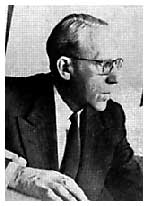I once had a great playroom
With a grant from the Child Neurology Research Foundation to work out methods for the observation and treatment of children, I organized a playroom in the middle thirties, while I was director of the Mental Hygiene Clinic at Bellevue Hospital. The case material and our methods in general were the same as those on which these studies are based. One of the main differences in the outer circumstances of the children is that until the end of the thirties there were no crime comic books to speak of, whereas in the forties they had, with respect to the time they take up, become one of the most important influences on children's lives.
In my play observations and therapy, children engaged in spontaneous play activity of a type that permitted them to express themselves as fully as possible. Any games with set rules or reading of books were considered an obstacle. The children constructed buildings with mechanical building sets of wood and metal, draw, paint, made mosaics with colored stones, and worked with clay.
Watching children in this setting, one learns how false is the idea that if left to themselves, with opportunity for constructive play, they will pay no attention to that and will instead seek outlets for "aggression."


<< Home